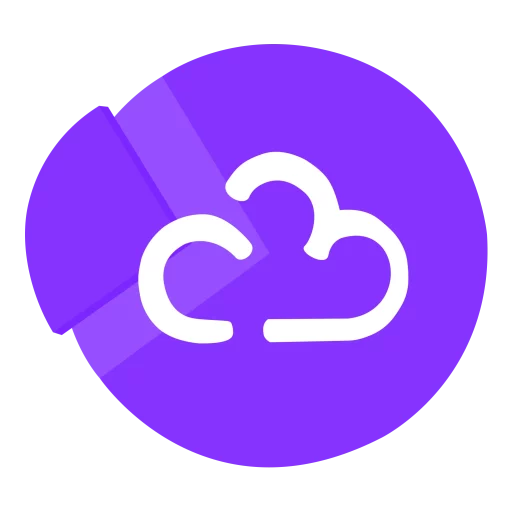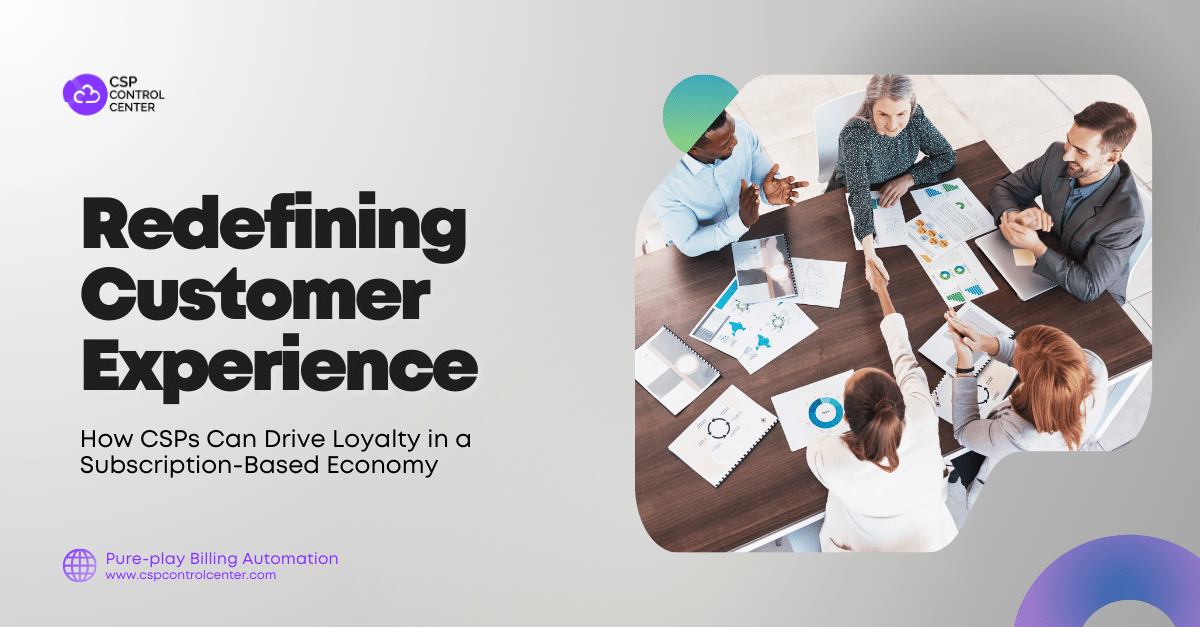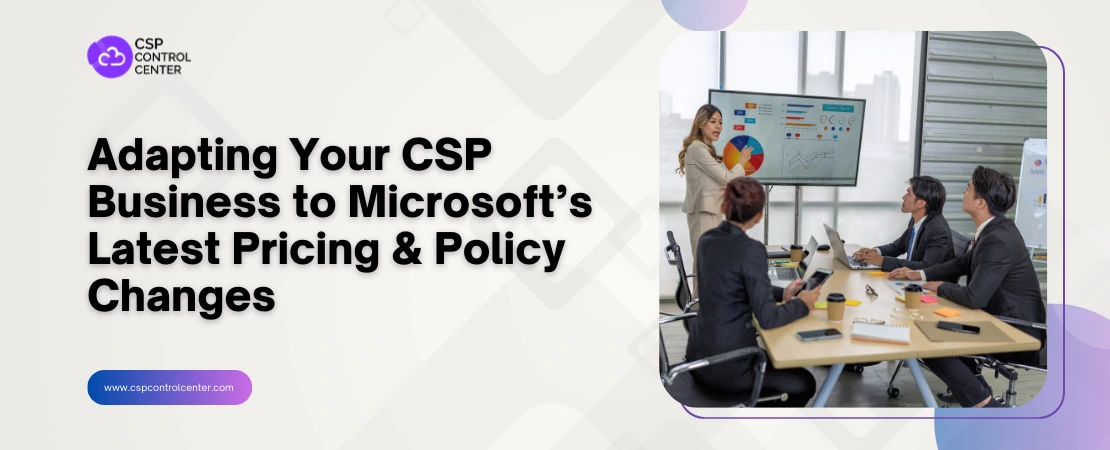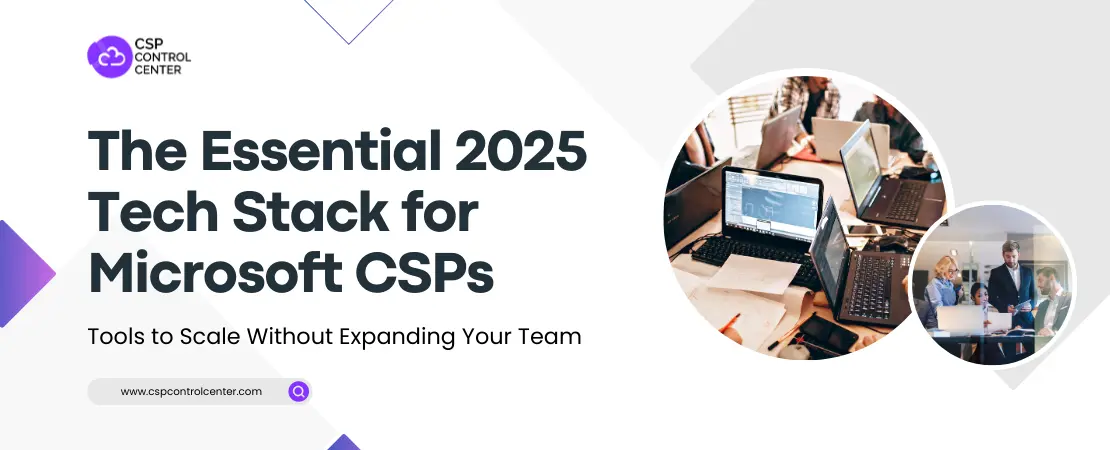The rise of the subscription-based economy is transforming how businesses operate and engage with customers. From entertainment and e-commerce to software and cloud services, businesses are increasingly shifting towards recurring revenue models to meet customer demands for flexibility, convenience, and value. As businesses increasingly rely on cloud services, Cloud Solution Providers (CSPs) are becoming key players in this shift toward subscription-based models.
The subscription model is beneficial for both CSPs and customers. For CSPs, it provides predictable revenue streams, deeper customer insights, and opportunities for long-term engagement. For customers, it delivers flexibility, convenience, and continuous value. Though the subscription model brings in recurring revenue and stabilizes cash flow, it also requires CSPs to minimize customer churn in a highly competitive environment.
The Role of Customer Experience in the Cloud Industry
In the competitive world of cloud services, customer experience is a critical factor for success. As a Microsoft CSP, you need to focus on customer retention along with customer acquisition. With high customer acquisition costs and intense competition, retaining existing customers is far more cost-effective than acquiring new ones.
Why Customer Experience Matters for CSPs
As the subscription-based economy continues to grow, delivering exceptional customer experience is no longer optional—it’s essential. From boosting revenue and customer loyalty to fostering customer advocacy and differentiating the business, excellent customer experience helps secure long-term success in a crowded marketplace. Here’s why customer experience matters so much for CSPs:
Boosts Revenue
Exceptional customer experience directly impacts the bottom line of your Microsoft CSP business. Happy customers are more likely to renew subscriptions, upgrade to higher-tier plans, and explore additional services. By focusing on customer experience, you can increase customer lifetime value (CLV) and create a predictable, recurring revenue stream.
Reduces Customer Churn
In the subscription-based economy, retaining customers is just as important as acquiring new ones. A positive customer experience makes the customers feel valued and supported and reduces the likelihood of them switching to competitors. Reduction in customer churn can lead to significant financial benefits.
Drives Customer Advocacy
Satisfied customers become brand advocates, spreading positive word-of-mouth and bringing in new business. Happy customers are more likely to leave positive reviews and testimonials and provide referrals. Investing in customer experience can indirectly support your customer acquisition efforts.
Differentiates in a Crowded Marketplace
With so many CSPs offering similar cloud solutions, customer experience can be a key differentiator. A superior customer experience can set you apart from the competition. Customers are more likely to choose a provider that offers personalized support, seamless onboarding, and proactive service.
Challenges in Delivering Exceptional CX
Even though customer experience is important, providing it can be challenging for CSPs. some of the common challenges include:
Complex Cloud Services
Cloud solutions can be quite complex and involve integrations and technologies that can be overwhelming for the majority of the customers. Customers may struggle to understand or fully utilize the services offered which may lead to frustration. Simplifying these services without compromising functionality remains a major challenge.
Inconsistent Experiences
Customers may interact with multiple touchpoints (e.g., sales, support, technical teams) and receive inconsistent information or service quality. This can impact trust and damage a business’s reputation. Similarly, if the different touchpoints such as websites, portals, and support teams are not seamlessly integrated, the overall customer experience can feel fragmented and frustrating.
Lack of Personalization
Customers expect personalized experiences tailored to their specific needs and preferences. Generic interactions can leave customers feeling undervalued and reduce customer loyalty. You may serve a diverse range of customers, from small businesses to large enterprises, making it difficult to tailor experiences to individual needs.
Billing Issues
Cloud billing can be complex due to usage-based pricing, subscription models, and additional charges for extra services. Complicated or unclear billing processes can frustrate customers and damage trust.
Scalability of Support
As your CSP business grows, maintaining the same level of customer care becomes more difficult. Limited resources, such as smaller support teams or outdated tools, can lead to longer response times and reduced service quality.
Strategies for Redefining Customer Experience
To thrive in the subscription-based economy, you must go beyond traditional service models and adopt strategies that are truly customer-centric. By focusing on personalized support, seamless onboarding, and proactive service, you can create meaningful experiences that drive loyalty, reduce churn, and differentiate your offerings in a competitive market. Here is how you can redefine the customer experience.
Offer Personalized Support
In a highly competitive business environment, offering personalized support helps set you apart from generic service providers. Customers expect solutions that align with their specific needs and personalized support ensures customers feel valued and understood. It builds trust and strengthens relationships, leading to higher satisfaction and loyalty. According to Epsilon research, “80% of consumers are more likely to engage and make a purchase when businesses provide personalized experiences.” This highlights the growing importance of tailoring interactions to meet individual customer needs, especially in the subscription-based economy. Here’s how to implement personalized support effectively:
Leverage Data Analytics
Data is at the core of personalization. By analyzing customer behavior, usage patterns, and purchase history, you can identify specific needs and tailor your offerings accordingly. For instance, if a customer frequently scales up their licenses during peak seasons, you can proactively suggest scalable subscription models or flexible licensing options.
Appoint Dedicated Account Managers
Dedicated account managers especially for high-value customers can act as a single point of contact, building strong relationships and ensuring personalized attention. This ensures customers have a consistent point of contact who understands their unique challenges and goals.
Utilize AI-Driven Insights
Artificial Intelligence (AI) can help take personalization to the next level by analyzing vast amounts of data and delivering actionable insights in real time. This advanced approach not only enhances the customer experience but also allows you to anticipate needs and address issues proactively.
Develop Customized Communication
Personalized emails, tailored recommendations, and relevant updates show customers that you understand their business. For instance, you could send a customer-specific report showcasing how their Azure workloads have optimized costs, paired with recommendations for further efficiency.
Ensure Seamless Onboarding
The onboarding process is the first real interaction customers have with your service, and it sets the tone for the entire relationship. A smooth onboarding experience can significantly reduce time-to-value and minimize churn during the critical early stages of the customer lifecycle. Here are the key steps to onboard customers effectively:
Pre-Onboarding Preparation
Before onboarding begins, thoroughly understand the customer’s specific goals, challenges, and desired outcomes. This helps tailor the onboarding process to their specific needs. For example, you could collect details on the customer’s existing infrastructure to recommend the best way to implement the solutions. Create user accounts, configure settings, and ensure all necessary tools are ready. Create user accounts, configure settings, and ensure all necessary tools are ready. Apart from this communicate timelines, milestones, and what the customer can expect during onboarding.
Kickoff Meeting
Start the onboarding process with a kickoff meeting to align on goals and establish a strong foundation. Share who will be involved in the onboarding process and their roles. Discuss the customer’s objectives and how your solution will help achieve them. For instance, if the customer is migrating to Microsoft 365, outline how it will improve collaboration and productivity. Also, provide a clear roadmap of the onboarding steps and timelines. This keeps the customer informed and engaged.
Assign a Dedicated Onboarding Specialist
Assigning a single point of contact for the customer, fostering a stronger relationship and streamlining communication. It also ensures the customer receives personalized support throughout the onboarding process. The specialist should be knowledgeable about the product/service and able to provide expert guidance throughout the onboarding process.
Provide Training and Resources
The next step is to equip customers with the knowledge and tools they need to succeed. Offer step-by-step guides or video walkthroughs for key features along with personalized training sessions, user guides, or access to a knowledge base. You can also conduct live training sessions to demonstrate how to use the products effectively.
Conduct Regular Check-Ins
Regularly monitor the customer’s progress through the onboarding process. This ensures that the onboarding is on track and allows you to address issues promptly. Proactively identifying and addressing any challenges or roadblocks the customer may be encountering makes the customer feel supported throughout the journey.
Gather Feedback
Feedback is essential for refining the onboarding process and improving customer satisfaction. This insight can help make the onboarding process better for future customers, ensuring continuous improvement. Use various channels to collect feedback, such as surveys, interviews, and feedback forms. Take action on the feedback received and make necessary adjustments to the onboarding process.
Provide Proactive Service
In the subscription-based economy, waiting for customers to report issues is no longer enough. Proactive service helps you prevent issues before they arise, ensuring customers enjoy uninterrupted services. It also shows customers that you are invested in their success, fostering trust and long-term loyalty. Here’s how you can implement proactive service effectively:
Implement Monitoring and Predictive Maintenance
Use tools to constantly track system performance, usage patterns, and potential failure points. Predict potential bottlenecks, such as resource overutilization or underutilization, and notify customers in advance. By identifying potential issues and addressing them before they impact the customer prevents downtime and demonstrates your commitment to customer success.
Send Personalized Alerts and Notifications
Keep customers informed with personalized alerts about usage trends, nearing subscription limits, or upcoming updates. For example, if a customer is close to reaching their license allocation limit, then notifying them timely allows them to take action before hitting limits, ensuring uninterrupted service. Also, instead of just notifying about a potential problem, offer specific, actionable advice on resolving the issue quickly.
Offer Data-Driven Recommendations
Use data to understand customer needs and suggest relevant features, products, or services. Provide tailored recommendations, such as upgrading plans, scaling resources, or adopting new features. Share reports and dashboards that highlight key metrics and areas for improvement. If a customer’s data shows they’re underutilizing a particular tool, offer tips or training to help them get more value.
Conduct Regular Health Checks and Audits
Conduct periodic account reviews to assess performance, security, and efficiency. This ensures that customers’ systems are running smoothly and efficiently. Share reports with customers that highlight areas of improvement, potential risks, and optimization opportunities. This regular engagement strengthens customer relationships.
Provide Proactive Customer Support
Train support teams to anticipate common customer issues and reach out to customers before they encounter those issues to offer assistance and guidance. For example, if you observe a decline in activity, check in to offer assistance or provide resources. Also, offer support through multiple channels (chat, email, phone) and ensure that support is available around the clock for critical issues.
Deliver Continuous Education and Resources
Keep customers informed about new features, best practices, and industry trends to help them maximize the value of your services. You can host webinars, workshops, and training sessions to educate customers. Also, share newsletters, blogs, and case studies highlighting success stories and tips.
Leveraging Technology to Enhance Customer Experience
In the competitive cloud industry, technology plays a pivotal role in delivering exceptional customer experience. By leveraging advanced tools and platforms, you can streamline operations, personalize interactions, and proactively address customer needs. Let us have a look at how you can enhance customer experience with technology:
Harnessing AI and Machine Learning
Artificial Intelligence (AI) and Machine Learning (ML) enable you to deliver personalized, proactive, and efficient customer experiences at scale. Use AI to analyze customer data and provide personalized recommendations such as recommending the right Azure services or Microsoft 365 features based on usage patterns. Azure AI can help predict resource bottlenecks and suggest optimizations. You can implement AI-powered chatbots to provide instant, 24/7 support for common queries, reducing wait times and improving satisfaction.
Empowering Customers with Self-Service Portals
Self-service portals provide customers with the convenience of managing their subscriptions, monitor usage, and resolve common issues independently building a sense of ownership. Click here to learn more about enhancing customer experience with self-service capabilities. Self-service portals can also be personalized to display relevant information and resources based on the customer’s profile and past interactions. Self-service portals can improve customer satisfaction by providing quick and easy access to information and support.
Simplifying Transactions with Billing Automation
Billing is a critical touchpoint in the customer journey, and manual processes can lead to errors, delays, and frustration. Billing automation ensures accuracy, transparency, and efficiency, enhancing the overall customer experience. Billing automation systems also offer customers a variety of payment options (credit card, debit card, ACH, etc.) to make it easy for them to pay their bills. Consistent, error-free invoicing helps build trust and drive customer loyalty. Read our blog to learn more about improving customer payment experience to achieve business growth for Microsoft CSPs.
Drive Customer Loyalty with C3
Ready to take your customer experience to the next level? Discover how CSP Control Center (C3) can help you streamline operations, enhance customer satisfaction, and drive loyalty in the subscription-based economy.
- Ensure Seamless Onboarding – Simplify customer setup with automated provisioning and real-time account management.
- Enhance Proactive Service – Get real-time insights into usage, automate alerts for renewals and overages, and anticipate customer needs before issues arise.
- Eliminate Billing Frustrations – Automate invoicing, ensure accuracy, and provide transparent billing to build trust and reduce disputes.
By leveraging C3’s automation and analytics, you can strengthen customer relationships, reduce churn, and create a frictionless experience that keeps customers coming back.
Get in touch with us to book a demo today.

 CSP Control Center
CSP Control Center
 CloudEvents
CloudEvents


